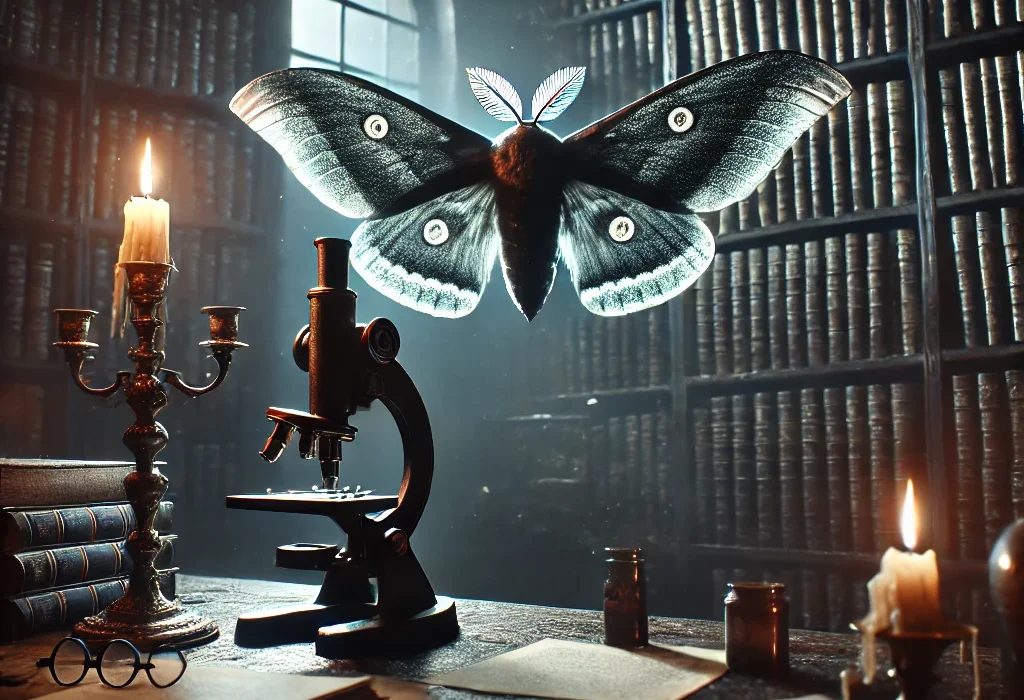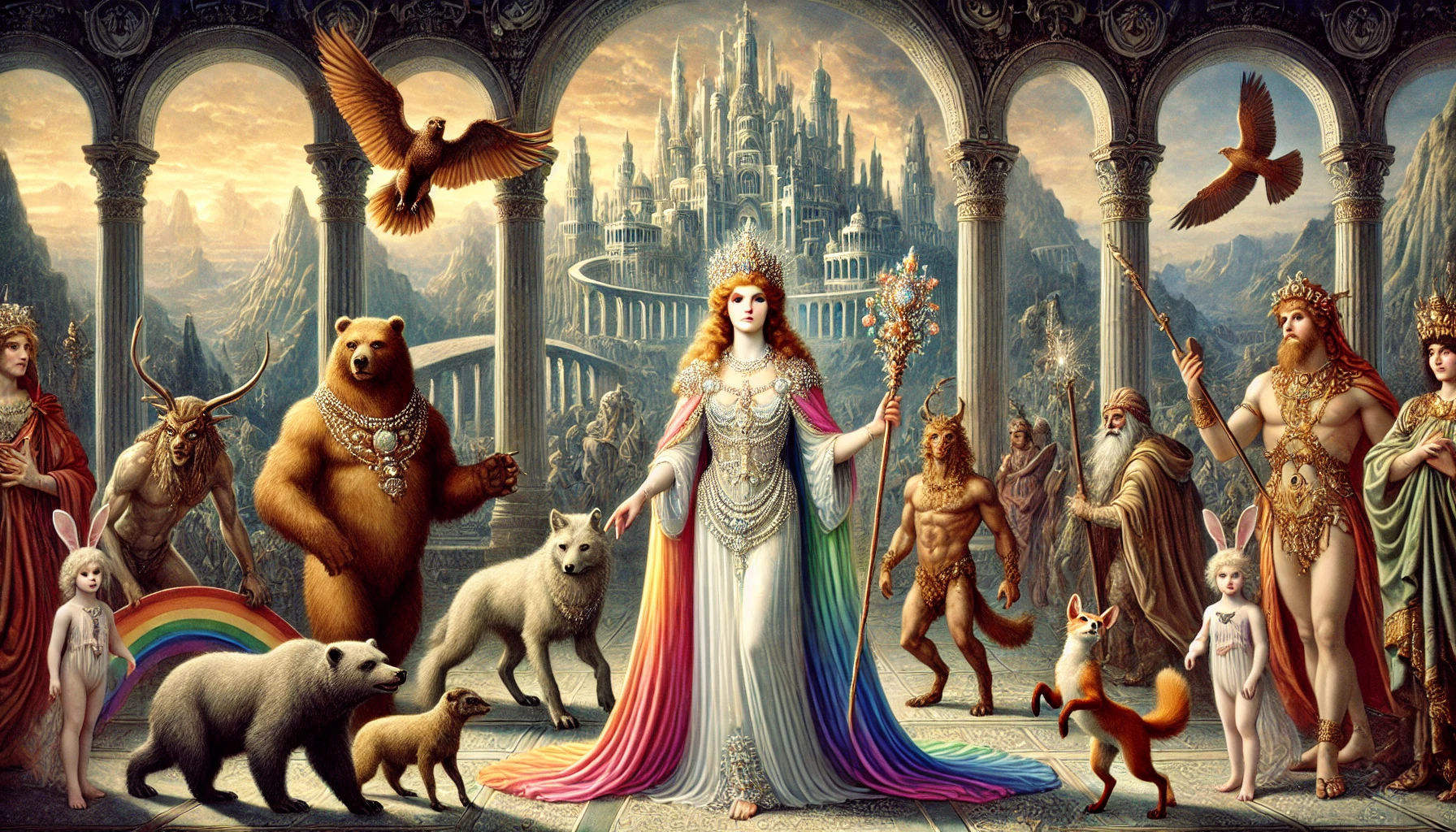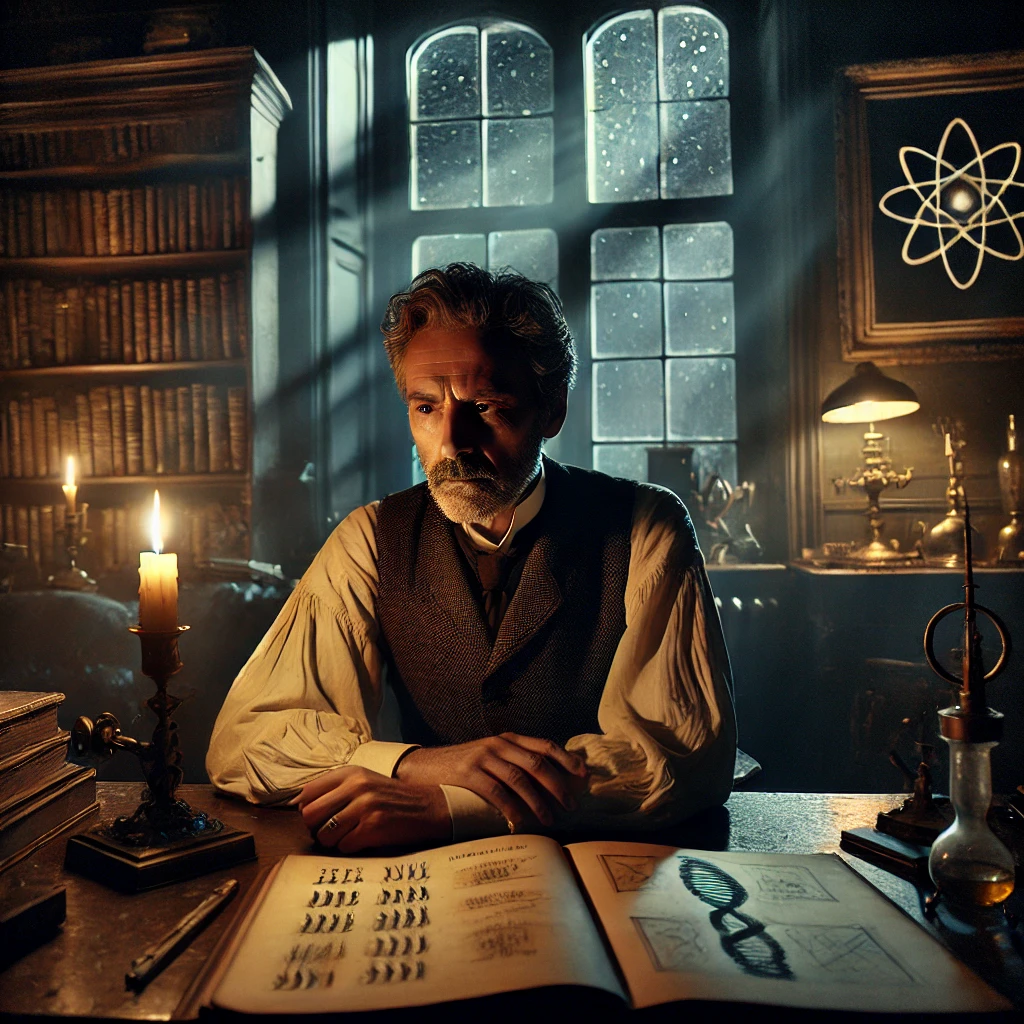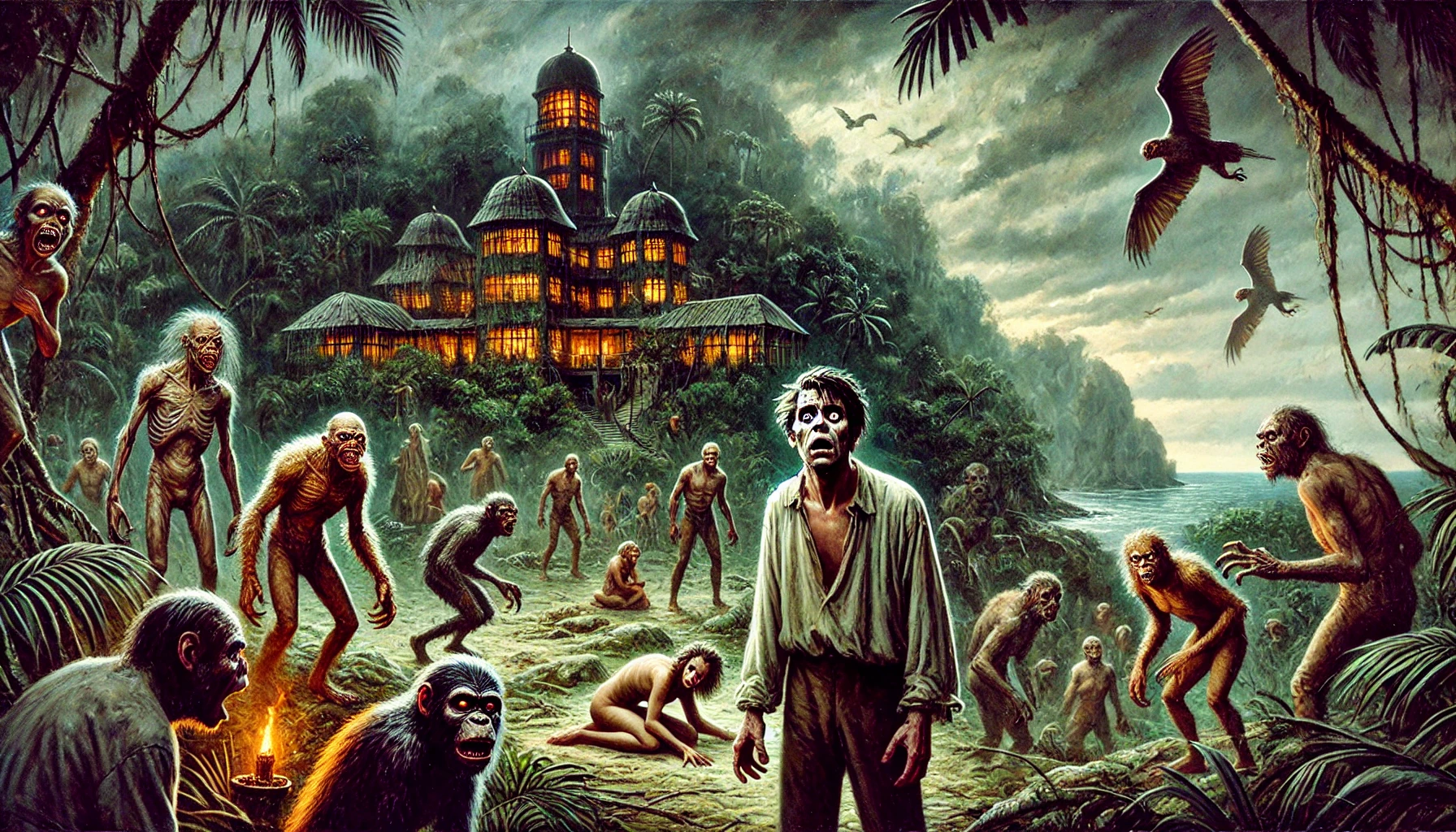“The Moth” is a short story written by H.G. Wells, published in 1895. The story delves into the psychological unraveling of an entomologist named Hapley, who becomes haunted by the ghostly presence of a moth, believed to be the manifestation of his deceased rival, Professor Pawkins. This tale is a blend of psychological horror and scientific obsession, showcasing Wells’s ability to weave eerie narratives with profound themes.
Plot Summary
Professor Hapley, a celebrated entomologist, had always been a man of fierce intellect and even fiercer rivalries. His most significant adversary was Professor Pawkins, a man as devoted to the study of insects as Hapley himself. For years, their feud had been the talk of the scientific community, their debates on the minutiae of entomology often descending into personal attacks. It all began with a seemingly minor disagreement over the classification of a particular species of moth. Pawkins had extinguished a species Hapley had identified, dismissing it in a paper with such condescension that it sparked a war of words. This battle of minds continued unabated, with each man taking every opportunity to discredit the other’s work.
Hapley, known for his sharp wit and ruthless rhetoric, gained a following among the younger scientists. Pawkins, on the other hand, was a duller figure, less charismatic but stubborn and knowledgeable. Their rivalry spanned years, turning every entomological meeting into a battleground. In the eyes of the public, it was more than just a scientific disagreement; it was a struggle between two titans of the field. Every attack and counterattack added to the lore of their feud, captivating those who watched from the sidelines.
Then, in 1891, Pawkins published his work on the mesoblast of the Death’s Head Moth. It was not his finest work, a fact that Hapley was quick to exploit. In a blistering critique, Hapley tore Pawkins’s research to shreds, using every ounce of his skill to humiliate his rival. Pawkins responded, but it was clear he was struggling. His health was failing, his mind dulled by age and illness. The feud that had once been his fuel now drained him. Hapley’s final critique was a masterpiece of vitriol, leaving Pawkins no room for a counterattack. The world waited for Pawkins’s response, but it never came. Instead, Pawkins fell ill, the stress of the conflict proving too much for him. He died of pneumonia, leaving Hapley victorious but strangely unsatisfied.
Hapley’s triumph was short-lived. The death of his rival cast a shadow over his victory, a sense of unease that he couldn’t shake. He had spent years sharpening his wit and intellect against Pawkins, and now that his opponent was gone, he found himself adrift. He took the advice of his doctor and retreated to a quiet village in Kent, hoping that a change of scenery would soothe his troubled mind. But even there, Pawkins haunted him. His thoughts circled back to their debates, to the moments he could have said more, done more to destroy his rival.
In an attempt to escape these thoughts, Hapley threw himself into new studies. He began to examine diatoms, microscopic organisms that offered a new challenge to his restless mind. He hoped to rekindle the passion he had once felt for discovery, to find solace in the pursuit of knowledge. But his mind betrayed him. As he peered through his microscope one evening, he noticed something unusual. A flutter of movement caught the corner of his eye, a disturbance on the tapestry-covered tablecloth beside him. Looking up, he saw it: a large moth, its wings spread wide, staring back at him with an unsettling familiarity. The moth was unlike any he had ever seen. Its form was strange, its colors a perfect mimicry of the tapestry beneath it. More disturbing, though, was the way it reminded him of Pawkins. He couldn’t place it at first, but something about the moth’s posture, its stillness, its very presence in the room seemed to mock him.
The notion that this moth might be something new was quickly overshadowed by a surge of anger. Pawkins would have been infuriated by this discovery, and now he was not there to see it. The moth took flight suddenly, evading Hapley’s grasp with a speed that defied explanation. It fluttered around the room, a phantom in the dim light, disappearing into the shadows only to reappear elsewhere. Hapley struck at it with a lamp shade, but it evaded him time and again. In his desperation, he knocked over his lamp, plunging the room into darkness.
The moth seemed to vanish, leaving Hapley in a state of confusion and growing dread. He heard it, though, a faint flutter in the blackness around him. It brushed against his face, sending a shiver down his spine. Hapley lit a candle and searched the room, but the moth was gone. Yet, he knew it was still there, lurking just beyond the edge of his vision. That night, he dreamt of Pawkins. The man stood before him, his eyes gleaming with a mocking light, a silent laughter that echoed through Hapley’s mind. He awoke in a sweat, the image of the moth burned into his memory.
The next day, he tried to resume his studies, but the moth returned. It appeared as if from nowhere, landing on his arm, its wings quivering with a life of their own. Hapley slapped at it, but his hand met only empty air. The moth was gone, yet he could still feel its presence, a weight pressing down on his thoughts. He spoke to the village vicar, hoping for some distraction. They sat together, discussing theology and the nature of belief, but even here the moth intruded. Hapley saw it on the edge of the table, its form solid and real, yet the vicar saw nothing.
Hapley knew then that he was slipping, his grip on reality fraying at the edges. The moth followed him into his dreams, into the very fabric of his being. He saw it everywhere, felt it crawling on his skin, fluttering in the dark corners of his room. His landlady grew fearful, hearing him muttering and pacing in the night. She found him one morning, running through the streets in his nightclothes, swatting at invisible insects, his face contorted with terror.
They took him to the village doctor, a man unversed in the intricacies of the mind. The doctor saw only a man in the grip of a hallucination, nothing more. He tried to calm Hapley, but there was no reasoning with him. The moth was real to Hapley, as real as his own flesh and blood. It taunted him, mocked him with its silent wings, a constant reminder of the rivalry that had consumed him.
In his feverish state, Hapley pleaded for relief, calling the moth the ghost of Pawkins. But the doctor shook his head, dismissing his words as the ramblings of a deluded mind. They tied Hapley to his bed, fearing he might harm himself in his madness. The moth, however, did not leave him. It crawled over his face, its wings brushing against his skin. It grew larger in his dreams, a monstrous thing that filled his vision, blocking out the world.
And so, Hapley was left to languish in his padded room, haunted by a moth that no one else could see. It was his tormentor, his constant companion, the embodiment of his guilt and obsession. To the outside world, he was simply mad, another casualty of a mind pushed too far. But to Hapley, it was Pawkins, returned from the grave to claim his revenge. And in the quiet of his cell, he could hear its wings beating, a sound that would follow him to the end of his days.
Main Characters
- Hapley: An esteemed entomologist known for his quarrelsome nature and intense passion for his field. His rivalry with Professor Pawkins consumes him to the point of obsession. After Pawkins’s death, Hapley begins to experience visions of a mysterious moth, which he believes is connected to his late rival.
- Professor Pawkins: Hapley’s intellectual adversary, whose rivalry with Hapley spans over years of scientific disputes. Though Pawkins dies early in the story, his presence looms large over Hapley, symbolized by the moth that begins to haunt him.
Theme
- Obsession and Rivalry: The central theme revolves around Hapley’s obsessive rivalry with Professor Pawkins. This professional feud transcends death, affecting Hapley’s psyche and leading to his mental decline. The moth serves as a symbol of this unrelenting obsession, illustrating how rivalry can consume and destroy an individual.
- Science vs. Supernatural: The story blurs the line between scientific observation and supernatural occurrence. Hapley, a man of science, is tormented by an inexplicable phenomenon that defies his rational understanding, suggesting that not all can be explained through logic and reason.
- Madness and Paranoia: Hapley’s encounters with the moth lead to a descent into madness, highlighting how the mind can be affected by guilt, obsession, and unresolved conflicts. The story portrays how paranoia can grow when one’s reality is constantly challenged by what seems to be hallucination.
Writing Style and Tone
H.G. Wells employs a style that combines meticulous scientific detail with a haunting and eerie narrative. His descriptions are vivid and precise, reflecting his background in science, which lends credibility to the story’s entomological aspects. The tone is somber and unsettling, as Wells explores the dark recesses of the human mind, delving into themes of obsession and madness. He creates an atmosphere of tension and ambiguity, leaving the reader questioning the reality of the moth and the extent of Hapley’s insanity.
The narrative voice is somewhat detached and analytical, reminiscent of a scientific report, yet it gradually becomes more subjective as it delves into Hapley’s deteriorating mental state. This shift in narrative perspective enhances the psychological horror of the story, drawing the reader into the protagonist’s escalating paranoia and the surreal events that unfold.
We hope this summary has sparked your interest and would appreciate you following Celsius 233 on social media:
There’s a treasure trove of other fascinating book summaries waiting for you. Check out our collection of stories that inspire, thrill, and provoke thought, just like this one by checking out the Book Shelf or the Library
Remember, while our summaries capture the essence, they can never replace the full experience of reading the book. If this summary intrigued you, consider diving into the complete story – buy the book and immerse yourself in the author’s original work.
If you want to request a book summary, click here.
When Saurabh is not working/watching football/reading books/traveling, you can reach him via Twitter/X, LinkedIn, or Threads
Restart reading!








